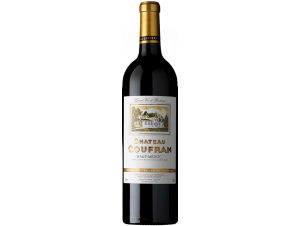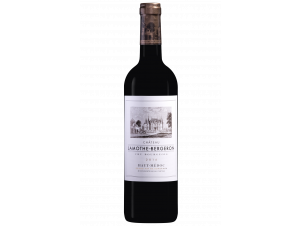You have no items in your shopping cart.
Wine Haut-Médoc
The Bordeaux appellation Haut-Médoc is located south of the Médoc appellation. It produces some very fine wines, including five estates distinguished in the 1855 Grand Cru classification, such as Château La Lagune and Château La Tour Carnet. Read more on Haut-Médoc
-
Top Selling
-
Top Selling-25%
-
Top Selling
- -40%
- -15%
Appellation Haut-Médoc
The Haut-Médoc vineyard dates back to antiquity
In ancient times, the Haut-Médoc was bordered by the territory of the Médullis and the Bituriges Vivisques, founders of Burdigala, which later gave birth to the city of Bordeaux. The marriage of Eleanor, Duchess of Aquitaine, to Henry Plantagenet, future King of England, in 1152, contributed to the development of trade with England, and thus to the fame of the wines of the Médoc. The medieval winegrowing centres were grouped around the ecclesiastical structures and the holders of the right of bourgeoisie of Bordeaux.
As early as the 16th century, Bordeaux and local nobles created wine castles in the region. It was at the request of Napoleon III, as part of the 1855 Universal Exhibition, that the first classification of Médoc wines was made. Five grands crus classés are installed on the vineyards of the appellation.
The AOC (Appellation d'origine contrôlée) Haut-Médoc was ratified by the decree of 14 November 1936.
The Haut-Médoc offers a festival of classified growths
Haut-Médoc is an AOC (Appellation d'origine contrôlée) and also carries the European AOP (Appellation d'origine protégée) label. The red wines are made with cabernet-sauvignon, mostly associated with merlot. In these wine-growing communes, over the course of a century, the share of vines on the farms has become the majority. Vine density can range from 6500 to 10,000 vines per hectare, with a minimum sugar content of 162 g/l of must. Average yields are between 48 and 66 hectolitres per hectare.
The appellation has five grands crus classés in 1855: the château La Lagune, château La Tour Carnet, château Belgrave, château Cantemerle and château de Camensac.
The Haut-Médoc benefits from the combination of an oceanic climate and clay soils
The whole region benefits from natural conditions that are particularly favourable to the growing of vines: gravelly ridges deposited by the Garonne, an oceanic climate with mild winters and moderate drought in summer. The light gravel soils are perfectly suited to the cultivation of cabernet sauvignon. The more clayey terroirs, meanwhile, benefit the merlots.
The grape varieties listed in the appellation's specifications are cabernet franc, cabernet sauvignon, carménère, côt, merlot, and petit verdot. Cabernet Sauvignon is in the majority in the Médoc vineyards (from 30 to 85% depending on the property), followed by Merlot and more marginally by Cabernet Franc, Petit Verdot and Côt.
The wines of Haut-Médoc offer a strong potential for ageing
When young, the Haut-Médoc wines have powerful tannins. Some wines cannot be enjoyed for several years. They then offer aromatic associations of red fruits. Aging in oak barrels gives them aromas of roasting and leather. These are wines with strong keeping potential, which can easily be kept from 5 to 30 years (for great vintages).
They offer, in their youth, a robe with garnet and purplish reflections. The nose is typical with notes reminiscent of red and black fruits. The second nose reveals a spicy and roasted flavour that evokes mocha, cocoa beans, with a hint of vanilla and toast.
On the palate, the attack is supple, the material gradually reveals itself, the wine unveils itself little by little. Deep and dense, the tannins are well present, but fine and well integrated with the whole matter, the finish is distinguished by spicy notes.
The Haut-Médoc can be drunk young, but should be carafed at least two hours before serving, at a temperature of 16 °C. As it ages the chew will become even silkier and deliver notes of prunes, undergrowth, humus and sometimes truffle and cigar box.
The wines of the appellation pair with red meat, poultry, and work wonderfully with game and cheese. It can accompany an entrecote à la Bordelaise with ceps, all types of grilled meats, but also why not, a quail with grapes or duck aiguillettes...
2009, vintage of the century for Haut-Médoc
The last two decades have been distinguished for the Haut-Médoc appellation by some remarkable vintage. It can boast good vintages such as 2014 and 2017, and great vintages, such as 2015 and 2018. But there are no less than three exceptional vintages, 2005, 2010, 2016, and a vintage of the century: 2009.
Internationally renowned estates that make the reputation of Haut-Médoc
These three estates classified as grands crus of the Haut-Médoc appellation in 1855 have a reputation that extends far beyond our borders.
Château La Lagune
Founded in the 18th century, the estate appears in the 1855 Grand Cru classification in third position. It was restored in 1958 by Georges Brunet and bought by Ayala champagnes in 1962. In 2000, the estate was acquired by the Frey family, and Caroline Frey, œnologist, took over the running of the estate in 2005 to modernise it and further improve the quality of the wines produced by the estate.Château La Tour Carnet
The oldest château in the appellation, it was erected in the 12th century. It has had famous guests such as Michel de Montaigne. It was placed 4th in the 1855 classification of great growths. At that time, its wine was produced by the Leutken family. The phylloxera crisis plunged the estate into decline until the end of the 1970s when the estate was bought by Louis Lipschitz, a Gironde shipowner. Finally, it was sold to Bernard Magrez, its current owner, in 1999. He has continued to expand it since then, making his estate the largest cru classé du Médoc.The Château Belgrave
A hunting lodge for the Coutanceau family in the 17th century, the estate grew in size in the 18th century during the "fury of planting". It was acquired by the merchant Bruno Devès in 1845, who enlarged it, built the chais and cuviers and chose gravel soils for his vineyard. In 1855, the estate was classified 5th grand cru. The phylloxera crisis had a lasting effect on the estate, which experienced a long period of dearth. It only ended in 2002, when the vineyard was leased to the Consortium des Vins de Bordeaux et de la Gironde (C.V.B.G), which was itself bought in 2007 by the Thiénot group, which restored its prosperity.
Bordeaux appellations









































 TWIL - Achat de Vin
TWIL - Achat de Vin


